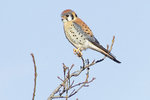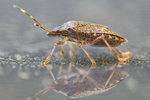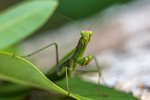


Last month, writing about what to anticipate in our natural world, I pointed to the return of rain as one of September’s most important events.
Hold on. That was two months ago.
By many measures we have had the warmest and driest fall on record—Augtober being the new coinage—thanks to a ridge of high atmospheric pressure that remained locked like a fortress wall over the eastern Pacific Ocean, preventing wet systems from developing. Rain will likely have returned by the time this goes to press (knock on wood), but the never-ending run of summer weather has me stirring up questions like dust with every step I take in the parched woods.
Will we still see the full suite of fall mushrooms? Will the deer go into rut when they usually do? What impacts have there been on the complex food webs in our soil? How are our poor cedars feeling now, on top of last year’s extreme heat?
Variability underpins climate and all ecosystems. Unprecedented events should not go unexamined. What are you seeing? What concerns do you have? Let me know at nature@keypennews.org.
The Falcons You Might See
Recently I found the Key Peninsula’s third record of American kestrel. The orange and slate-blue falcon played hide-and-seek with me for a few minutes before vanishing into the treetops.
The kestrel is America’s most common falcon, a baby-faced hunter of grasshoppers, dragonflies and small mammals that is a fixture on fences and snags in open country. We live in one of the few regions where kestrels are rare, and this one probably had wandered a bit on its fall migration.
Keep your eyes open for two other types of falcons around here. Neither is common. They appear when you least expect them.
Falcons are relatively easy to pick out in flight. They have strongly bent, narrow wings coming to extreme points, and they fly with stiff and hyper-agile wingbeats. Only mourning doves have a similar look overhead.
Peregrine falcons hardly need an introduction. Large and powerful, they follow shorelines and marshes where they can set up screaming dives to send waterfowl scattering for their lives. If you get a good view, look for the dark helmet that comes down over their eyes.
Then there are merlins, small dark falcons that specialize on attacking small birds. While peregrine falcons drop like missiles from above, merlins tend to attack from below, exploding into flocks of birds and making quick work of the ensuing confusion. A good time to look for a merlin is at sundown in winter, when they perch atop conifers to say goodnight to the world.
Stink Bug Home Invaders
Time to hold my nose and cover this. Several of you have asked about the stink bugs that seek entrance into your homes in late fall, commenting that they seem extra numerous this year.
You know the type. Of our several species of local stink bugs the one that concerns us is the brown marmorated stink bug (BMSB), a mottled gray-and-brown, shield-shaped thing that crawls slowly across windows and siding and often stands at attention, vibrating its white-banded antennae.
If you’ve been around a while, you might know that these guys are a new phenomenon. Native to eastern Asia, BMSB made its first appearance in the United States in Pennsylvania around 2000 and has since laid siege to North America as well as Europe and South America, rapidly establishing itself as a peerless agricultural pest. It feeds directly on fruit, vegetables, nuts and a host of native plants, causing corky spots and disfigurement.
I appreciate almost all insects and spiders. I don’t appreciate these. To answer your questions: I cannot say if they are more abundant this year than other years or if the hot, dry fall has kept them more active and visible than normal—a non-answer that applies as well to this year’s many praying mantises and flies. As for why they want to sneak into your house, it has to do with survival tactics. Every insect needs to orient its stages of life around the survival of winter. Many overwinter as inert pupae, others as hidden larvae, while BMSB overwinters as an adult. To assure safety in its motionless winter torpor, it seeks a crevice where it cannot be bothered. Homes offer many such crevices.
Some native insects use the same strategy and can be seen alongside BMSB, including western conifer seed bugs, boxelder bugs and red-crossed shield bugs. These are not pests.
If you were to design a world in which BMSB could be everywhere all the time, it would look a lot like the Anthropocene, with every land full of hard structures with cracks and crannies, fields of juicy plants where predators and competitors have been sprayed to oblivion, and containers crossing oceans. It’s one of those species that just go well with human infrastructure, and I wouldn’t be surprised if one day soon it has a simpler name akin to barn owl, city pigeon, giant house spider, cellar spider.
(Incidentally, the suite of spiders that have found a good living in houses do very well preying on BMSB.)
For now, BMSB runs amok. But a rebalancing may be in store. In its native range it is not a pest because over three-quarters of its eggs are parasitized by wasps. One wasp in particular, a nearly microscopic critter called a samurai wasp, specializes on BMSB eggs. Well, in 2015, samurai wasps were found in Washington, likely hitching their way here along with stowaway BMSBs, and they are spreading fast. So far, they seem to be leaving our cute native stink bugs (many are bright green) alone. Samurai wasps will never eradicate BMSB, but they may bring it into check.
It’s a lot more promising than the agriculture sector’s first response, spraying pesticides, which kills all insects and ruins any chance you may have had for a native predator or parasite to take advantage of the BMSB bounty and rebalance the insect ecosystem. Plus, BMSB is such a generalist that it has no problem feeding away from fields and returning when the spraying stops.
UNDERWRITTEN BY THE FUND FOR NONPROFIT NEWS (NEWSMATCH) AT THE MIAMI FOUNDATION, THE ANGEL GUILD, ADVERTISERS, DONORS AND PEOPLE WHO SUPPORT INDEPENDENT, NONPROFIT LOCAL NEWS